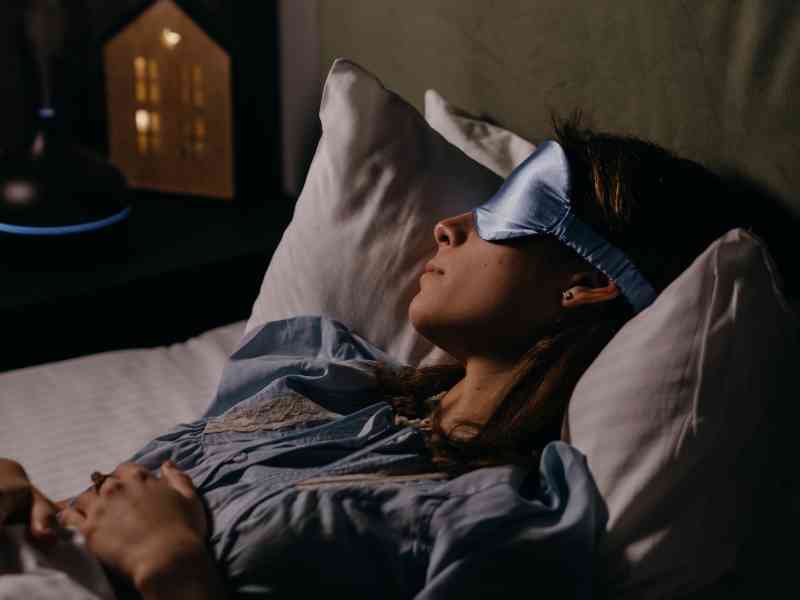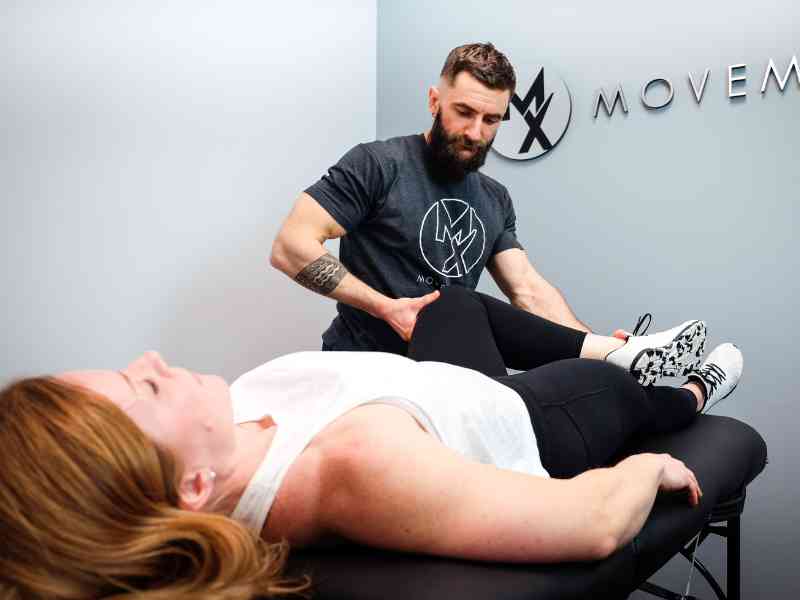Welcome to Part 2 of our recovery series! Today, we’re exploring sleep’s critical role in recovery, pain management, and overall health.
Off the bat, if you want a deep dive I suggest the book Why We Sleep by Matthew Walker. He’s a foremost researcher on sleep, and reading his book along with implementing some of the strategies I outline here will put you in a great state of sleep hygiene.
My focus in this article is on sleep as it relates to pain and tissue repair. Even if you aren’t injured, sleep should be a top priority in your life simply because of its association with so many key markers of health, including cardiovascular disease, neurodegenerative diseases like Alzheimer’s, learning, cognition, focus, athletic performance, and more. Let’s get into it.

The Bidirectional Relationship Between Sleep and Pain
While all recovery habits work together (none are truly more important than another) I consider sleep the cornerstone because of its direct influence on both pain perception and tissue repair. The connection between sleep and pain is stronger than most people realize… up to 88% of people with chronic pain report sleep complaints (1).
For decades, researchers assumed that pain caused poor sleep. But, we know now that the relationship works both ways (it’s bi-directional).
Poor sleep can actually create and worsen pain, just as pain can disrupt sleep.
Even more surprising? Poor sleep leading to chronic pain is far more common than pain negatively influencing and disrupting our sleep. This discovery is game-changing because it means we can actively reduce pain by improving sleep quality (2).
How Sleep Affects Your Body’s Pain Systems
While the mechanisms are not fully understood, sleep has been shown to influence many aspects of our pain regulating systems.
Sleep quality can have both analgesic (pain relieving) or hyperalgesic (pain amplifying) effects. A night of poor sleep can simultaneously heighten the hyperalgesic systems in our body, which make us more sensitive to pain, and decrease our analgesic systems, which dull our pain sensation.
It’s like turning up the volume on pain signals while simultaneously breaking your body’s built-in pain medication.
This double hit explains why chronic sleep problems strongly predict whether a recent (acute) injury becomes a source of long-term (chronic) pain.
While this sounds scary, the opposite is also true! Meaning, when you get a good night of sleep, you’re likely to be less responsive to painful stimuli and able to tolerate higher levels of pain (2).
Sleep’s Role in Tissue Repair and Growth Hormone
Sleep is when your body shifts into repair mode. Sleep has been shown to directly influence the Growth Hormone (GH), and the better you sleep the more GH you produce.
This isn’t just about feeling rested… It’s about giving your body the biochemical tools it needs to heal.
In turn, GH stimulates the production of Insulin-like Growth Factor-1 (IGF-1), a hormone which plays many important roles in our body, the most important ones for our discussion being its ability aid in muscle growth and tissue repair.
Poor sleep has been shown to lead to lower levels of circulating IGF-1. Your body simply can’t keep up with repair demands, turning what should be effective healing into a sluggish process.
By prioritizing sleep, you can keep IGF-1 circulating in your body at optimal levels, giving your tissues a better environment for quick and complete recovery (3).

How Much Sleep Do You Actually Need?
Now that you understand sleep’s critical role in pain management and healing, let’s talk about practical applications. Both quality and quantity matter for recovery, so aim for 7-9 hours per night as your baseline and adjust based on how you feel and perform.
The key is making those 7-9 hours count through good sleep hygiene practices.
Essential Sleep Hygiene Strategies
1. Keep a consistent sleep schedule
Set the same bedtime and wake time every day (yes, even weekends). This syncs your sleep with your circadian rhythm, which is your body’s internal clock that regulates when you feel alert or sleepy.
2. Honor your chronotype
You’re either naturally a morning person or night owl. Don’t fight your biology. Morning people shouldn’t force late nights, and night owls shouldn’t try forcing early bedtimes. Work with your natural tendencies, not against them.
3. Get sunlight and movement during the day
Sunlight exposure helps set your circadian rhythm, while regular exercise directly improves sleep quality. Take a walk, run, or ruck outside to hit both targets at once.
4. Block blue light 1-2 hours before bed
Electronic devices emit blue light that suppresses melatonin production (your natural sleep hormone). I personally wear blue blocking glasses at night to limit the amount of blue light before bed. They’re inexpensive and easy to get online.
5. Cool your bedroom to 65°F
Your body temperature naturally drops as you prepare for sleep. Science suggests that a cool bedroom (around 65°F) supports this process (4). Humans evolved to sleep outside and it’s generally cooler outdoors after the sun goes down. You can also try a cooling mattress pad if you don’t want to turn down the AC too low in the summers.
6. Cut off caffeine by morning
Caffeine can stay in your system for up to 10 hours, blocking the receptors that make you feel tired. Keep your coffee habit to the morning hours only.
7. Avoid alcohol before bed
While alcohol might make you feel drowsy initially, it significantly disrupts sleep quality in the second half of the night. I’m not telling you to never drink again, but understand that those nights you do drink, your sleep quality will suffer.

Conducting Your Personal Sleep Audit
Improving sleep can feel overwhelming when you’re not sure where to start. Before implementing changes, conduct a simple sleep audit to identify your specific problem areas. Track these basics for one week:
Your Sleep Audit Checklist
- What are you doing in the hour leading up to bed each night?
- What time do you get into bed?
- How long does it take you to fall asleep? (estimates are fine)
- Are you staying asleep? (Brief awakenings are normal, constant tossing and turning isn’t)
- What time do you get out of bed each day?
Once you have this data, you’ll clearly see your opportunities for improvement. This targeted approach lets you focus on what actually needs fixing rather than overhauling habits that already work well.
Remember, better sleep equals better recovery and less pain. Start with one or two changes from your audit findings and build from there.
In Part 3, we’ll explore how nutrition supports your recovery journey and works synergistically with quality sleep.
References
- Afolalu, E. F., Ramlee, F., & Tang, N. K. Y. (2018). Effects of sleep changes on pain-related health outcomes in the general population: A systematic review of longitudinal studies with exploratory meta-analysis. Sleep medicine reviews, 39, 82–97. https://doi.org/10.1016/j.smrv.2017.08.001
- Haack, M., Simpson, N., Sethna, N., Kaur, S., & Mullington, J. (2020). Sleep deficiency and chronic pain: potential underlying mechanisms and clinical implications. Neuropsychopharmacology : official publication of the American College of Neuropsychopharmacology, 45(1), 205–216. https://doi.org/10.1038/s41386-019-0439-z
- Chennaoui, M., Léger, D., & Gomez-Merino, D. (2020). Sleep and the GH/IGF-1 axis: Consequences and countermeasures of sleep loss/disorders. Sleep medicine reviews, 49, 101223. https://doi.org/10.1016/j.smrv.2019.101223
- Pacheco, D. (2024, March 7). Best temperature for sleep. Sleep Foundation. https://www.sleepfoundation.org/bedroom-environment/best-temperature-for-sleep







